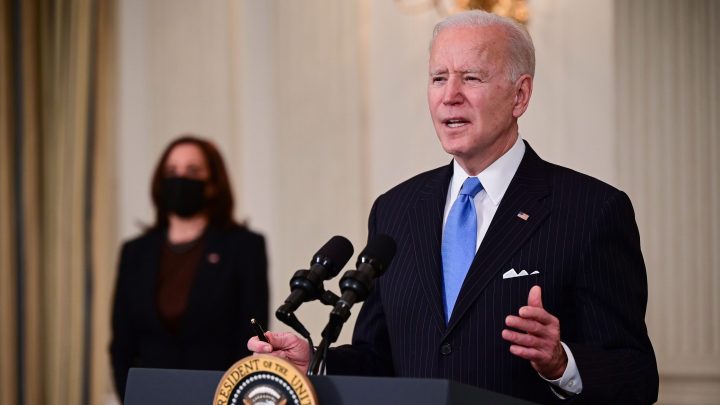
Who qualifies for the $1,400 checks under the Democrats’ new proposal?
Share Now on:
Who qualifies for the $1,400 checks under the Democrats’ new proposal?

Lawmakers continue to debate over who should qualify for a third round of stimulus checks, with Democrats now agreeing to a stricter eligibility limit.
President Joe Biden and Senate Democrats support sharper phaseouts, which means fewer Americans will receive any form of direct payment.
Under the Senate’s plan, people will still receive a full $1,400 stimulus check if they make less than $75,000. However, they’ll phase out for those making up to $80,000, with nothing going to those making above that threshold. Couples making less than $150,000 will receive the full amount, zeroing out at $160,000.
In comparison, the first two checks had a wider range of incomes that were eligible to receive any form of check. At a 5% phaseout rate, your payment was reduced by $5 for every additional $100 in income you made above the threshold.
The first relief package authorized $1,200 stimulus checks that went to those making less than $75,000, and phased out for those who made up to $99,000. The second round of $600 checks also went to those making less than $75,000, and phased out for those who made up to $87,000.
Howard Gleckman, a senior fellow at the Urban-Brookings Tax Policy Center, explained to Marketplace that these phaseout rates are aimed at reducing tax “cliffs.” It wouldn’t seem fair, for example, to receive $1,400 if you made $75,000, but get excluded entirely if you made $75,001.
Biden and Senate Democrats agreed to these stricter caps to appease the more moderate members of their party.
West Virginia Senator Joe Manchin, who has referred to himself as a “moderate conservative Democrat,” had wanted the thresholds for the full checks set even lower at $50,000 for individuals. He and Republican Sen. Susan Collins of Maine spearheaded a proposal last month that would end these checks entirely for individuals making above $75,000 and couples making above $150,000.
Meanwhile, the House passed a COVID-19 relief bill last week with looser guidelines than the Senate’s new plan.The $1,400 checks would be sent to individuals making $75,000 a year and married couples making $150,000. The amounts would gradually decrease, ending for individuals who make $100,000 and couples who make $200,000.
Progressive members of the Democratic party like House Rep. Alexandria Ocasio-Cortez have criticized the limits set by Biden and the Senate.
Ocasio-Cortez recently tweeted that this means the Biden administration will have sent less generous relief checks than the Trump administration, adding that “it’s a move that makes little-to-no political or economic sense.”
The left-leaning Institute on Taxation and Economic Policy has analyzed how many people would get help under the Senate caps, and found that 86% of adults and 85% of children would.
On the other hand, the House bill would help 91% of adults and 90% of children. In total, 11.8 million fewer adults and 4.6 million fewer children would end up receiving relief.
However, the ITEP pointed out that 280 million people would still reap benefits.“Among the bottom 60% of Americans, those who most need help, both versions of the proposal would benefit 100% of adults and children,” according to Steve Wamhoff, ITEP’s director of federal tax policy.
There’s a lot happening in the world. Through it all, Marketplace is here for you.
You rely on Marketplace to break down the world’s events and tell you how it affects you in a fact-based, approachable way. We rely on your financial support to keep making that possible.
Your donation today powers the independent journalism that you rely on. For just $5/month, you can help sustain Marketplace so we can keep reporting on the things that matter to you.


















